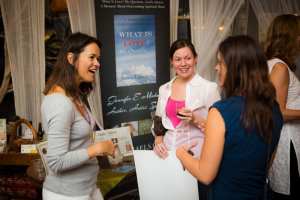The Pen is Mightier than the Sword, so my Keyboard is my Machine Gun – David Wake

Having just packed in the day job (advice to writers: never give up the day job) to write full-time, I find myself thinking a great deal about a previous day job. I used to work in computer science research. We were trying to invent the internet and, in hindsight, all the elements were there, but we never put them together. My field was the human-computer interface. I’m an SF writer, so thinking about technology is the new day job. (I also write steampunk with The Derring-Do Club adventures and ‘miscellaneous’ with Roninko and Crossing the Bridge, but the SF is I, Phone and the Thinkersphere series, although cosy mystery next.)
So, in preparation for the new lifestyle, I’ve been reorganising my office space v e r y s l o w l y. It’s ludicrous that now I’ve the time, I’m re-organising to be more efficient. Surely, when time is precious and shared with something else, that’s when you should be more efficient?
One thing I have changed is my keyboard. It’s a shiny (literally as there are lights under it) Ergodox split, ortholinear, tilted, customisable, ergonomic keyboard with thumb clusters.
“Excuse me, a what?” you ask.
Split, so you aren’t hunched over the keyboard straining your shoulders.
Ortholinear (or columnar) means you aren’t bending your fingers in weird ways.
Tilted for less wrist strain as you don’t have to rotate your hands onto the keyboard.
Customisable for those endless hours fiddling with the layout. For more, much more, see below.
And, finally, ergonomic, which is code for expensive.
Thumb clusters hold a collection of twelve keys pressed by your thumbs. It is insane that the right thumb, the most dextrous of our digits, is only used for the space bar and that the left thumb, the second most dextrous digit, is only used for the same spacebar. (It’s also insanity that we only use our thumbs on our phones.) My clusters currently have space, return, ctrl, backspace, home, end and dedicated keys for copy, paste and find – all just under my thumbs.
You can change what the keys do. If you don’t like the double quote there, then have it here. My writing has a lot of dialogue, I used to be a playwright, so having to press shift+2 is a strain on my little finger. The solution was to move it over the apostrophe (which is the US layout) and swap it with the semi-colon. You have to look at a keyboard to understand the improvement and these tiny, little refinements are a step backwards as my fingers no longer know where a key has got to. But slowly I shuffle forwards. It’s a massive rabbit hole and I don’t think a week has gone by that I haven’t changed something. Recently, I had to type an email address and I found that I didn’t have an ‘@’ key anymore! I’d removed it. I catch myself wondering if I really need those number keys. I could easily have written it as ‘shift+two’ above.
I’ve not had the nerve to switch from the standard Qwerty layout to Dvorak or Coleman-DH.
Lockdown had elements of a blessing in disguise and a chance to re-evaluate life. These changes will hopefully bring benefits. Just thank goodness, I didn’t go mad and start obsessively doing something insane. Oh, by the way, I also have a 46 key keypad to supplement the keyboard for shortcuts, volume control and all those keys I’ve taken off the keyboard.
My partner described it as ‘sharpening pencils’, that habit that writers have to avoid doing any actual writing.
Like most things, it’s a balance, of course. I spend my whole day here (well, no, there are actual pencils to sharpen), so I may as well make it as comfortable and efficient as I can. You should too. I’m not suggesting that you switch to an Ergodox (although I do), but, importantly, I’m advising you to look at your setup and how you use it.
Seriously, look after yourselves. That’s the moral of this ‘Friday with Friends’. You may not have carpal tunnel syndrome… yet, but now is the time to do something about it. So, get a better keyboard (office chair, computer screen, reading glasses… etc) as soon as you can.
Take care.

To see David Wake’s previous interview on MTA, go here:
Connect with David:
Facebook: https://www.facebook.com/David-Wake-Author-287522215449564
Website: http://davidwake.com/
Amazon.com author page: https://www.amazon.com/David-Wake/e/B0034OBZRQ
Amazon.co.uk author page: https://www.amazon.co.uk/David-Wake/e/B0034OBZRQ
**************************************************************************
Here are a few suggestions on how to further support this author:
- Comment on the post
- Share the post using the social media buttons
- Click through to learn more about the author and their book(s)
- If interested, buy the book and leave a review
To support this website and the author’s interviewed, visit Support MTA for suggestions. Thank you! – Camilla, Founder and Host



























